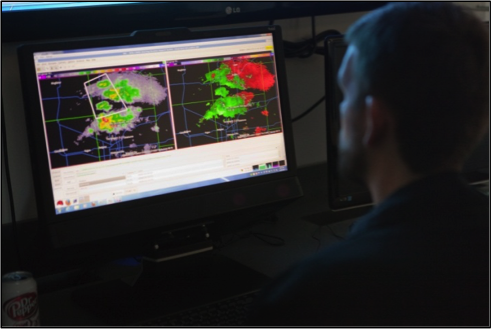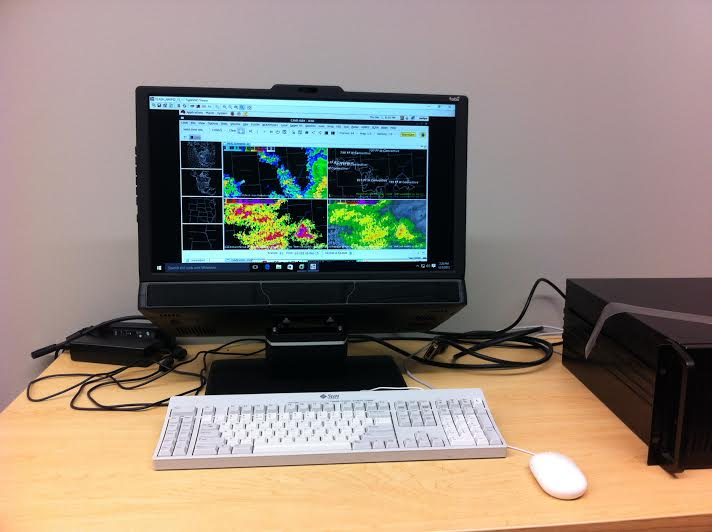This week, researchers from NOAA’s National Severe Storms Laboratory will launch the 2015 Phased Array Radar Innovative Sensing Experiment to assess the impacts of rapidly updating radar data on forecasters’ warning decision performance. The project will be carried out over the course of six weeks, and will conclude on September 25.
As in previous years, NSSL Research Scientist Dr. Pam Heinselman and CIMMS Researcher Katie Bowden will take the lead on the experiment. They will be working with NOAA National Weather Service forecasters to produce timelines of the warning decision process. Later they will analyze these timelines to determine the situational awareness attained from phased array radar data and how that information was used in warning decisions. The experiment will be conducted in three parts.
The first segment of 2015 PARISE will be conducted like a traditional experiment, according to Heinselman. Thirty National Weather Service forecasters from across the Great Plains region will be assembled to study nine archived cases. These cases will be worked in simulated real-time, using one-, two-, or five- minute phased array radar updates. The forecasters will determine whether or not to warn, based on the situational awareness gained from the radar data. Upon completion of each study, they will provide a detailed account of their warning decision process and overall workload. With more participants and additional case studies this year, the results are expected to be an improvement over previous experiments.
New this year will be the use of eye-tracking technology to better understand the decision-making processes of the forecasters. Eye-tracking technology has been successfully used for analysis in healthcare, air traffic control, and other human-computer interactions. Data pertaining to eye gaze will be gathered from each of the 30 forecasters while they are working on PAR case studies. Analysis of this data is expected to illustrate how update timelines impact forecasters’ decisions.

On the final day of PARISE, researchers will conduct a focus group aimed at generating insightful feedback. Forecasters will have the opportunity to share new ideas that will help shape the future of the PAR network. As radar continues to develop and forecasting resources are enhanced, National Weather Service meteorologists will be better equipped to warn the public of impending severe weather. This, in turn, will support the NWS objective to protect life and property and will help to build a Weather Ready Nation.



